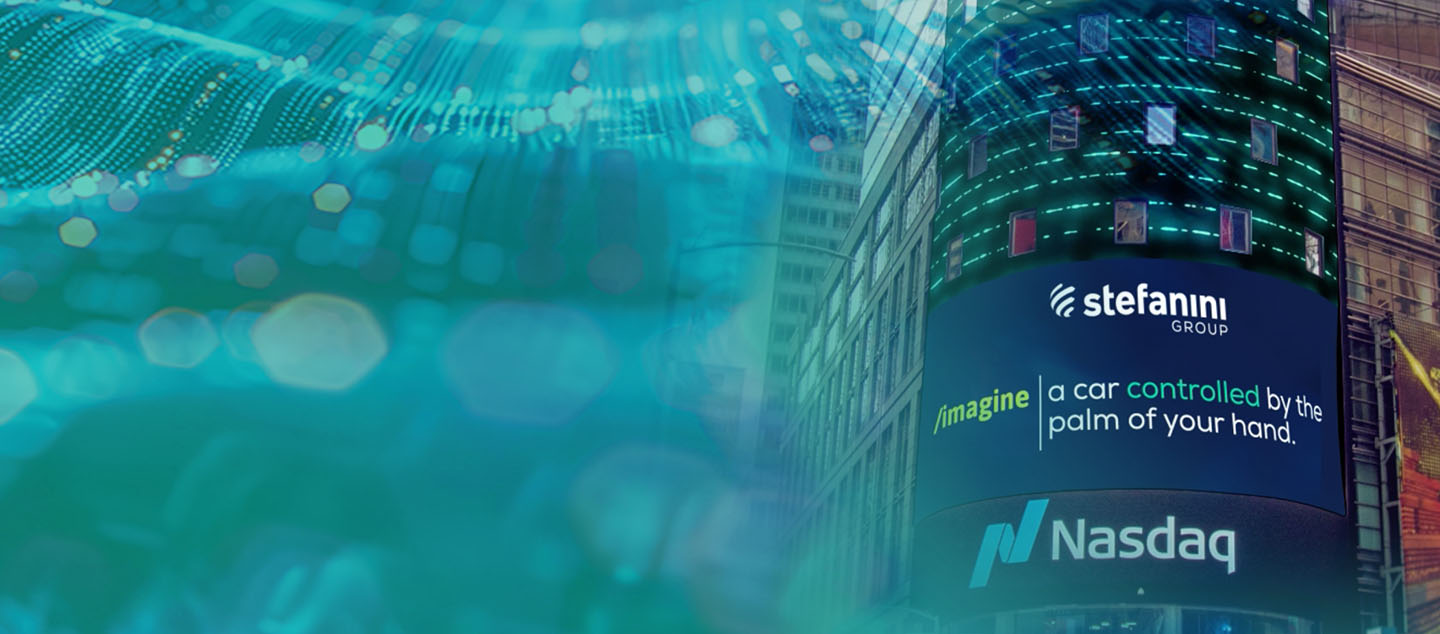While the manufacturing sector continues to navigate a fourth industrial revolution, Industry 5.0, the next revolution, has already begun. While the core technologies that made the Industry 4.0 a reality have not changed, Industry 5.0 brings a renewed focus on the human touch and shifts in organizational objectives.
What exactly does this revolution entail, and how will it influence your present and long-term business strategy? Before you make you sudden decisions or investments into new technologies, this article aims to changes that make Industry 5.0 a distinct movement.
What is industry 5.0?
You’ve likely already heard of the buzz surrounding industry 4.0, but there are several key differences that mark Industry 5.0 as a distinct movement. The European Union Categorizes Industry 5.0 “provides a vision of industry that aims beyond efficiency and productivity as the sole goals, and reinforces the role and the contribution of industry to society.”
At its core, the 5.0 movement aims to build more intuitive bridges between human and machine interactions across plant activities. This presents ambitious changes to the industrial world, placing the “wellbeing of the worker at the [center] of the production process and uses new technologies to provide prosperity beyond jobs and growth while respecting the production limits of the planet.” It complements the Industry 4.0 approach by “specifically putting research and innovation [in] the service of the transition to a sustainable, human-centric and resilient European industry.”
Make innovation work for you! Click here and download our guide to Industry 5.0.
The Difference between Industry 4.0 and 5.0
In the same way that industry 2.0 represents the shift from water and steam power to electrical, the term Industry 4.0 was originally described a transition in the German manufacturing industry toward digitization and automation.
This revolution is essentially enabled by IoT (the Internet of Things) and supporting technologies, allowing for integrated cyber physical convergence, digitization, wide-scale automation, and a fusion of IT and OT (Information and Operational technology) activities.
Additional tools and components include so-called cyber-physical systems, horizontal and vertical integration, the transition from industrial automation to industrial digital transformation, linked value chains, and others.
Many of the benefits promised by industry 4.0 innovations are only accessible at advance stages of implementation. Autonomous and semi-autonomous manufacturing processes, hyper-automation, advanced robotics, self-optimizing systems, data exchanges, are given a lot of emphasis in the Industry 4.0 phased vision, but can represent challenging implementation cycles. While 90% of Manufacturers regard industrial adoption of digital tools as a priority, only 1 in 4 see new revenue streams from present advancements.
Consequently, it seems fair to say that while many manufacturers have shifted their business models in an attempt to access industry 4.0 benefits, few have reached their overall transformation goals.
While the new wave of industrial innovation hinges on 4.0 technologies, Industry 5.0 aims to reinvigorate the push for industrial digitization by shifting the focus of innovation to human operators, operational resilience and true sustainability objectives.
UX design is at the heart of Industry 5.0 transformations. Read our Stefview blog to learn more.
Shifting Organizational Objectives
This new revolution re-contextualizes benefits more from technology, data, ecosystems, machines, and all those intelligent settings made possible by OT and IT. The core transformations of Industry 5.0 go beyond technology, but instead aim to improve manufacturing organizations by emphasizing three core objectives:
Human/Operator-Centric (UX Design, OX, etc.)
The key to Industry 5.0 success isn’t the tech — it’s the people using the tech. The Implementation of new systems and solutions requires an assessment of how your team works and engages with industrial and admin processes to ensure the touch points between man and machine are more intuitive.
For many businesses, attracting and retaining talent has become a considerably bigger task. The Skills required become prohibitive. Putting the user at the center of industrial tech adoption serves a means of addressing labor shortages and fully leveraging the human potential.
Further, a 15% efficiency increase has observed in digitalization initiatives that adopted operator centric approach. Consequently, it is imperative to take efforts to promote talent, diversity, and empowerment by streamlining Human Machine Interface (HMI) activities.
Benefits of Operator Centric Innovation Approach:
- Greater workforce diversity and accessibility
- Higher-quality cyber-physical interactions that empower Operators
- Improved worker safety and streamlined OX (operator experience)
Resilience
Industry 4.0 success criteria focused heavily on process optimization and profit maximization. However, the massive scale of supply chain disruption has made clear that manufacturers need to give priority to operational resilience. This necessitates organizational flexibility and the capacity to rely on adaptable technology.
Although agility and adaptability have become organizational priorities, these qualities do not necessarily translate into increased resilience. Digital tools can predict crises and assure stable performance, as evidenced by supply chain transparency and predictive forecasting.
- Predictive insights that reduce sourcing and operational costs
- Competitive edge gained from supply chain transparency and operational flexibility
- Robust training programs that equip personnel for evolving skills requirements
Sustainability
Truly sustainable businesses concentrate on boosting their positive impact as opposed to merely lowering their negative impact. ESG corporate responsibility goes beyond taking steps to reduce negative environmental impacts that result from corporate activity, and asks that manufacturers become part of the solution.
In many ways, Companies can address this change by taking steps towards the greater efficiency and reduced waste inherit to Industry 5.0 initiatives. As an organization’s digital systems become more robust and modular, they will have the flexibility to opt for more sustainable options more consistently.
- Reduced energy cost and waste
- Strengthen company reputation
- Positive societal and environmental impact.
Industry 5.0 Technologies and Applications
Here are a few examples of the technology and capabilities that make transformed industrial environments possible and how they’ll change as a result of Industry 5.0 innovations:
Digital Twins
A digital twin is avirtual representation of a real-world physical system or product (a physical twin) that serves as the indistinguishable digital counterpart of it for practical purposes, such as system simulation, integration, testing, monitoring, and maintenance.
Manufacturers can better understand their products and are enabled to innovate in ways that improve asset performance thanks to digital twins (virtual representations of real-world assets). Visualization tools will enable human operators to quickly grasp how components or processes fit into the larger production chain.
Predictive Maintenance
AI technology can be used to anticipate probable downtime and accidents by analyzing sensor data, which can disclose when functional equipment will fail so repairs can be scheduled in advance.
Manufacturers can increase productivity while lowering the cost of equipment failure by using AI-powered predictive maintenance. The Industry 5.0 emphasis on operator experience mean that predictive insights will be more easily accessible and actionable.
Generative Design
Machine learning algorithms are used in this iterative design process to imitate how engineers approach design. With generative design, designers input design criteria through specialized software that generates all possible designs based on factors like materials, dimensions, etc. Today, producers may quickly create dozens of design possibilities for a single product.
Price Forecasting
The severe price volatility of raw materials has always presented a substantial problem to manufacturers. This problem is made easier by AI-powered software that predicts pricing with accuracy and learns from its errors. Integration across OT and IT functions will enable operators to leverage price forecasting and real-time updates to make flexible decisions and avoid downtime.
Industrial Robotics
These factory robots automate routine operations, allowing people to concentrate on more fruitful aspects of their work while lowering the possibility of human error. Modern collaborative robots can assess their own precision and performance with AI and improve over time. This enables machines work alongside human workers, automating more sophisticated tasks while ensuring operator safety.
Edge Wearables
Today, data sets gathered from sensors on machines can provide producers with quick and decentralized insights. Edge analytics are frequently utilized to raise production quality and yield, spot performance declines early, and monitor wearable worker safety and health.
Process Optimization
Manufacturers can employ AI-powered process mining tools to remove production bottlenecks and increase productivity in order to reach sustainable output levels.
As mentioned before, while process optimization is not the sole focus of Industry 5.0 adoption, as UX implementations prove more successful, operators will be able to identify roadblocks more easily. In this sense, operator experience and process optimization go hand in hand.
Quality Assurance
With the use of technology like machine vision, which employs computer vision to deliver imaging-based automatic inspection and analysis for applications like automatic inspection, process control, and robot guiding, AI systems may detect any differences from the typical outputs on assembly lines. AI systems tell consumers when a final product’s quality is subpar so they can respond and make corrections.
Inventory Management
Due to their capacity for demand forecasting and supply planning, machine learning systems have the potential to encourage inventory planning activities. Additionally, techniques for demand forecasting enabled by AI deliver more accurate results than conventional methods like ARIMA. With the use of these tools, firms may more effectively control inventory levels, reducing the frequency of cash-in-stock and out-of-stock situations.
Boost production quality and efficiency. Download our OEE Improvement ebook to learn more.
Advantages and Disadvantages – Making Transformational Investments
Investments in Industry 5.0 technology are not one size fits all Insights gathered from big data provide decision-makers with a clear-eyed look into their operations, enabling them to identify what their needs are and to determine which targeted Industry 5.0 solutions should applied to meet defined needs.
- Industrial Internet of Things: IIoT allows you to track OT performance and serves as a viable data source for larger activities. This network of internet connected sensors and devices enable real-time transparency across operations.
- AI Development: The real-time insights often advertised as part of Industry 4.0 innovation depend on robust data analytics tools that can convert the large quantities of process information, or Big Data, gathered from connected devices. Thus, AI and Machine Learning tools are an essential feature of an Industry 5.0 environment.
- Operator Experience: Each of the major innovations and technologies can offer meaningful benefits, but all of them require User or Operator Experience is a key innovation that should sit at the heart of innovation efforts.
- Robotics and Automation: We’ve already talked about the potential of collaborative robots, but they serve as a single instance of the wide-scale automation potential industrial digitization offers. This potential extends to a greater IT/OT integration, which is exciting, as it brings two formerly distinct spheres together, blending IT with engineering and operations in ways that add value through new synergies. Similarly, streamlining user experience will enable operators to engage with data insights quickly and collaborate with automated systems in a flexible manner.
Make Industry 5.0 Innovation a Reality
The average manufacturer deals with around 800 hours of downtime annually, meaning almost $1 million in lost revenue each year. Further, the massive disruptions caused by COVID-19 Pandemic related supply chain slowdowns demonstrate unprecedented challenges ranging from material deficits to labor shortages. These challenges will continue to affect manufacturers as the global market continues to rely on innovation to stay competitive.
Stefanini Smart Manufacturing solutions start with the unique circumstance of your factory, connecting your legacy systems to tomorrow’s transformation efforts. Visit our solutions page to learn more and speak with an expert today!



















